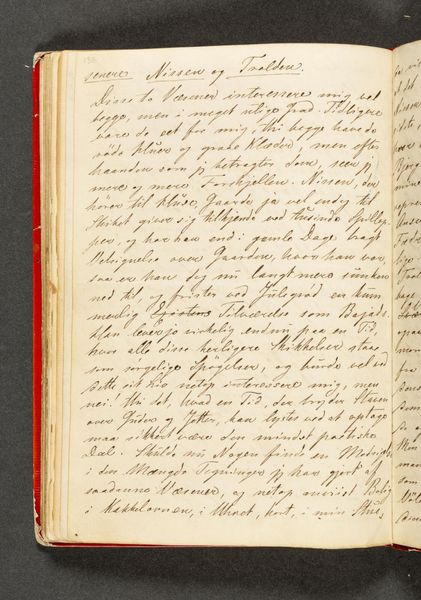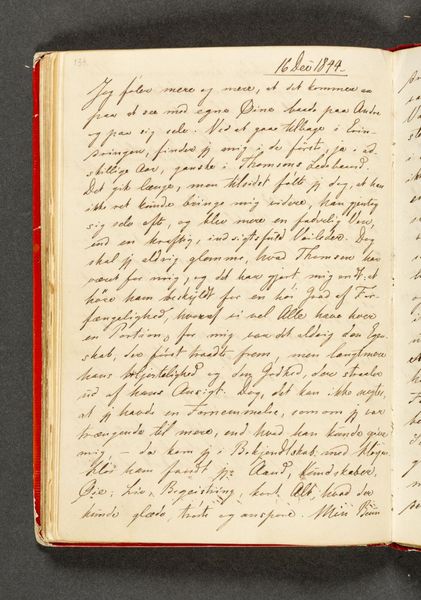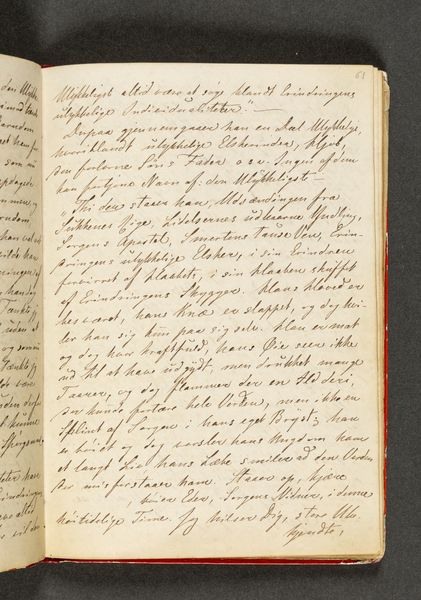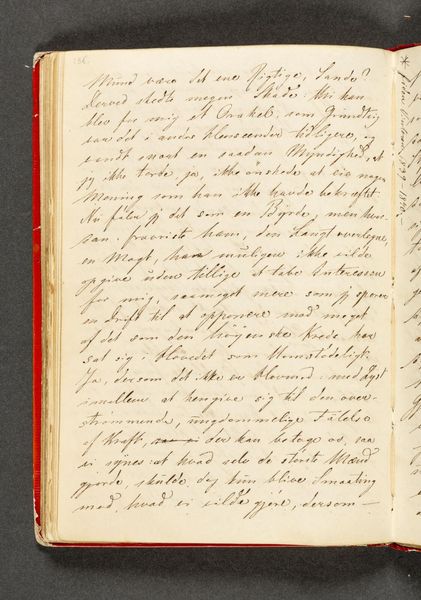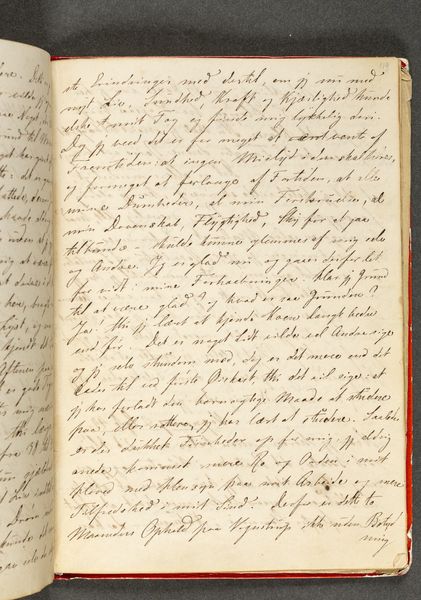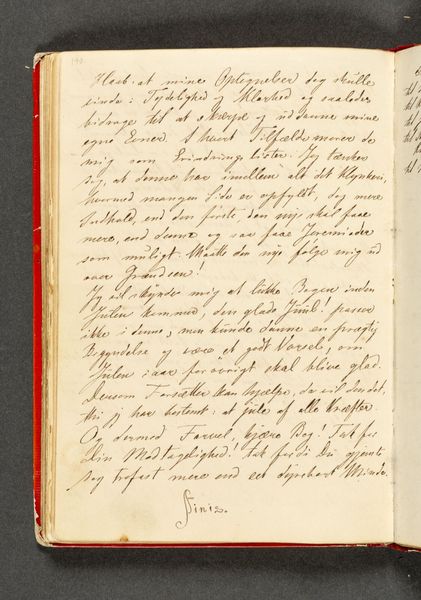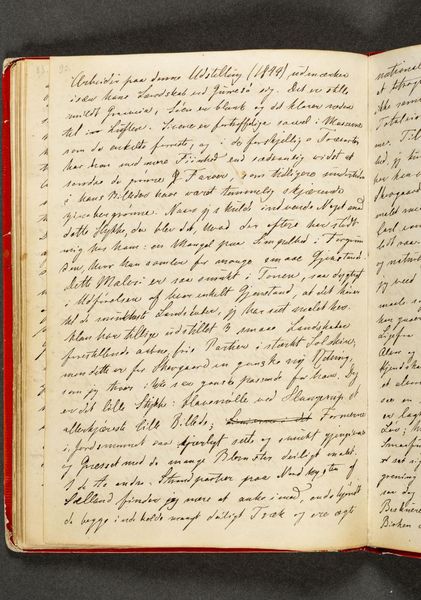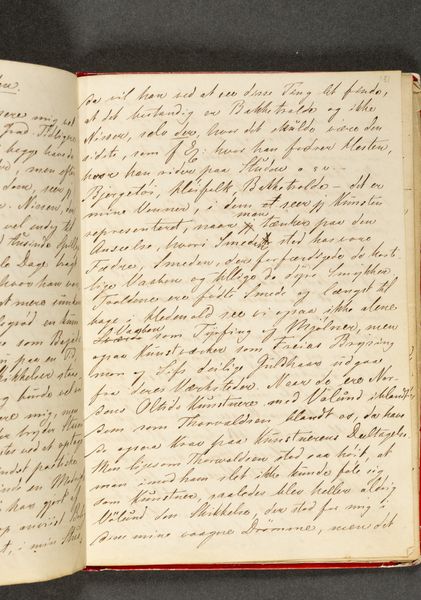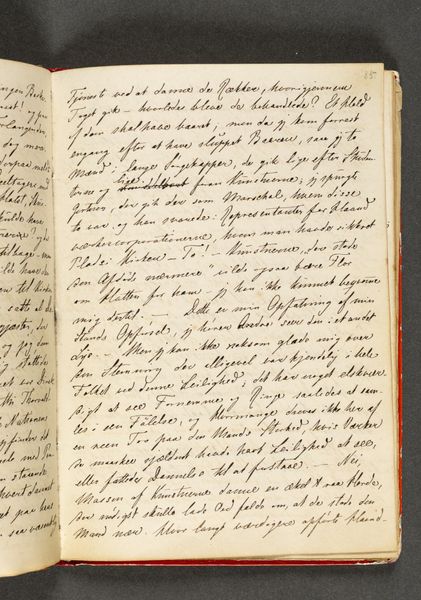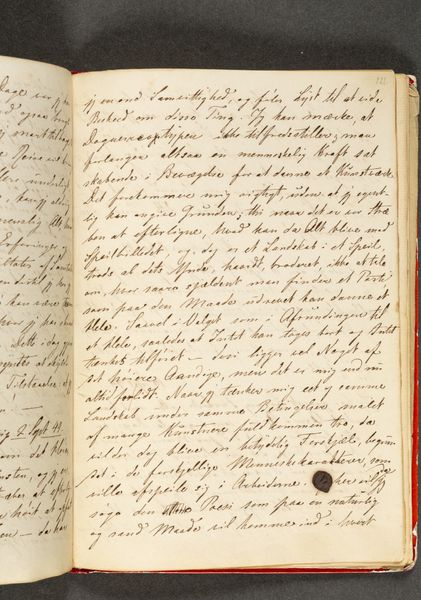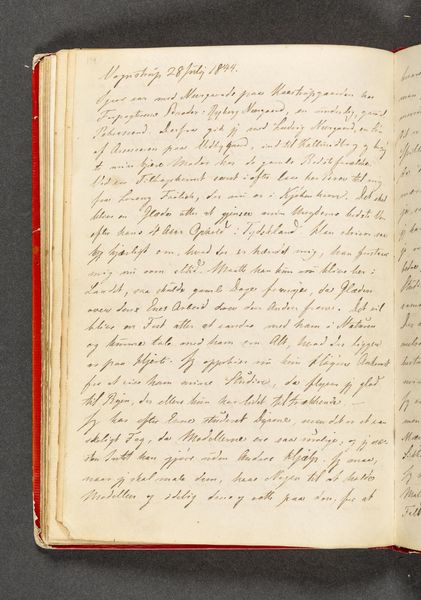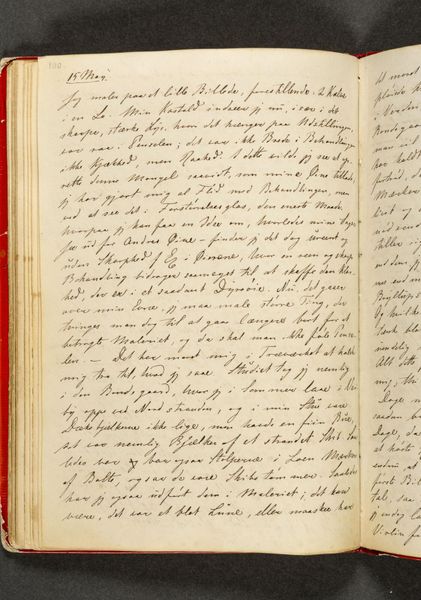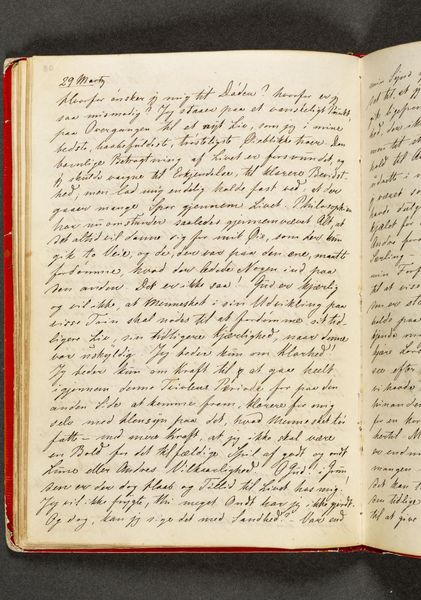
drawing, textile, paper
#
drawing
#
textile
#
paper
#
romanticism
Dimensions: 192 mm (height) x 133 mm (width) (bladmaal)
Curator: Here we have Johan Thomas Lundbye's "Dagbog. Side 128," a page from his diary dated 1844. It’s a drawing in textile on paper, a glimpse into his personal thoughts and reflections. Editor: It feels so fragile, doesn’t it? Seeing his handwriting gives an almost ghostly closeness to the man himself. Curator: Indeed. The diary, penned during the Romantic era, really allows you intimate access. Note how the handwritten script becomes almost another layer of image, the inky dark text forming contrast with the creamy tone of the page. Editor: The cursive script certainly has a beauty of its own. I'm wondering about the textiles? Do you mean the binding of the diary itself? Curator: Precisely, the textile binding frames and protects these ephemeral thoughts. The use of paper elevates it to more than simple note-taking, I feel. Each entry becomes a deliberate reflection, almost a performance. Editor: It makes me think about how the Romantics valued sincerity and authentic emotion. Journals like these became a way to cultivate the self, didn’t they? Curator: Absolutely, a space to wrestle with nature, art, and spirituality. Editor: Looking at this specific page, I sense a certain... melancholy. A vulnerability. Curator: His diaries, broadly, chronicle his experiences and inner turmoil as a burgeoning artist. The diary is not simply documenting life, it's actively shaping it, providing direction and maybe even acting as some form of consolation. Editor: In a way, it's a record of someone coming into their own. It's beautiful and so incredibly human. Curator: I think that captures it well; a tangible connection to a life lived and a mind seeking meaning. Editor: A poignant testament to the enduring power of the written word.
Comments
No comments
Be the first to comment and join the conversation on the ultimate creative platform.
